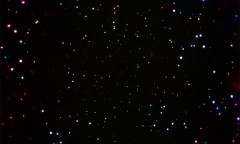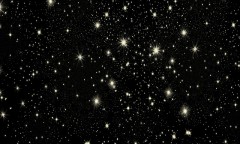By Vishal Goel, | January 13, 2017

Scientists have calculated the mass of the Milky Way Galaxy. (mario..olmos/CC BY-NC 2.0)
A Harvard research has revealed that half of the 11 farthest known stars in the Milky Way galaxy were ripped from a nearby dwarf galaxy called the Sagittarius dwarf.
Using computer models to simulate the galaxies over the past eight billion years, the researchers showed that one galaxy, weighing ten billion times the Sun's mass (or one percent of the Milky Way's mass) initially, lost about 33 percent of its stars and 90 percent of its dark matter over time.
Like Us on Facebook
The 11 farthest known stars, located about 300,000 light-years from Earth, are members of a lengthy stream of stars extending one million light-years across space, or ten times the width of our galaxy.
The lead author of the study, Marion Dierickx of the Harvard-Smithsonian Center for Astrophysics (CfA), said that the star streams that have been mapped so far are like "creeks compared to the giant river of stars we predict will be observed eventually."
The Sagittarius dwarf is one of many dwarf galaxies surrounding the Milky Way. Over the time, it made several loops around our galaxy and being pulled apart by the Milky Way.
As a result of losing stars and its dark matter, the galaxy now presents itself in the form of three distinct streams of stars that reach as far as one million light-years from the center of Milky Way. Stretching all the way out to the edge of the Milky Way halo, they display one of the largest structures observable on the sky.
Five of the 11 most distant stars in our galaxy have positions and velocities that match what one would expect of stars stripped from the Sagittarius dwarf. However, the other six do not appear to be from Sagittarius. Researchers suggest they might have been removed from a different dwarf galaxy.
These findings have been published in The Astrophysical Journal.
-
Use of Coronavirus Pandemic Drones Raises Privacy Concerns: Drones Spread Fear, Local Officials Say

-
Coronavirus Hampers The Delivery Of Lockheed Martin F-35 Stealth Fighters For 2020

-
Instagram Speeds Up Plans to Add Account Memorialization Feature Due to COVID-19 Deaths

-
NASA: Perseverance Plans to Bring 'Mars Rock' to Earth in 2031

-
600 Dead And 3,000 In The Hospital as Iranians Believed Drinking High-Concentrations of Alcohol Can Cure The Coronavirus

-
600 Dead And 3,000 In The Hospital as Iranians Believed Drinking High-Concentrations of Alcohol Can Cure The Coronavirus

-
COVID-19: Doctors, Nurses Use Virtual Reality to Learn New Skills in Treating Coronavirus Patients











